WELCOME
Orders over $25 (USD)
Get a 25% DISCOUNT
Japanese Green Tea Shops
There are countless blends of Japanese green teas that are made by mixing the different basic types, or even adding such things as cherry or plum blossoms to make unique or seasonal teas. Here is a quick look at some of the most common types of Japanese green tea.
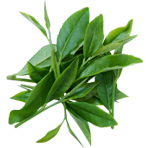
Shincha - Is the first pick (First Flush) of the season. "Shincha" and "Ichibancha" are the same tea, only the name is different. Shincha's key characteristic is its refreshing and invigorating scent of new leaves. Shincha also has a low catechin and caffeine content, making it less bitter and astringent compared with later flushes of the season. Shincha tends to have a higher content of amino acids (theanine), which give it full-bodied flavor and sweetness.

Sencha - Is the most common type of Japanese Green Tea and is brewed and served on a daily basis in most Japanese homes. Sencha is steamed and rolled soon after it is harvested. (It is made according to the most common processing methods by which the leaves are steamed and rolled).
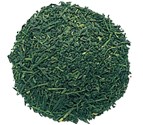
Fukamushi Sencha - Fukamushi Sencha is the same as Sencha but it is steamed two or three times longer. Fukamushi means "Steamed for a long time".

Gyokuro - Gyokuro is made from from "Shinme" the first flush of tea leaves, and is shaded from sunlight for about 20 days before it is harvested and processed. By limiting the amount of light that reaches the new growing shoots, the generation of catechins from amino acids (theanine) is suppressed, this results in a lower astringency and a richer flavor. An aroma, similar to nori seaweed, is one of Gyokuro's unique characteristics. Gyokuro is the highest quality tea available.
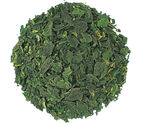
Tencha - Tencha is of the same class as Gyokuro and is also kept shaded from the sunlight before harvesting. The main difference is that Tencha is not rolled.
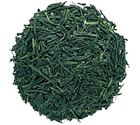
Kabusecha - is shaded from sunlight for 5 to 10 days before harvesting. This enables the new leaf shoots to grow without sunlight, giving the tea a darker green color, full-bodied flavor and lower astringency than Sencha.
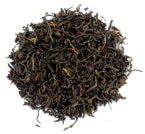
Bancha - After the second flush of tea leaves are harvested, the tea plant continues to grow. Bancha tea is made from the later flushes of more firm leaves and stems. It is a coarse tea. The lower quality of Bancha makes it less expensive than Gyokuro and Sencha. Bancha is also a popular and commonly served tea.
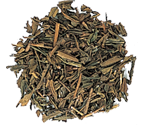
Houjicha - is made from the remains of Bancha or other types of Japanese green tea. Houjicha is roasted in a pan after it is dried at a temperature of about 200 degrees Celsius and immediately cooled and is brown in color. By roastingthe tea, caffeine is sublimated (changed directly from a solid to a gaseous state) and the Hojicha becomes less bitter. For this reason, it is said to be a tea that is easy to drink for children and elderly people. It has savory aroma and clear, light taste.
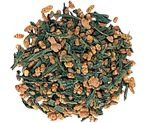
Genmaicha - Genmaicha is a blended tea. (Usually about 50:50). It is blended with Bancha or Sencha and "brown rice" (which is rice that still has the bran covering on the grain). It has a distinct and fragrant aroma. The soaked and steamed brown rice is roasted and popped. The combination of the savoriness of roasted brown rice and the refreshing flavor of Bancha or Sencha gives it a distinct and enjoyable flavor. Since brown rice is mixed in (thereby decreasing the amount of Bancha or Sencha); Genmaicha has a low caffeine content, making it a suitable tea for children and elderly people.
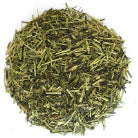
Kukicha - Kukicha also called "stem tea" is actually what remains after sifting Gyokuro and Sencha. It has a light sweet taste and is very mild. It is often served with traditional Japanese snacks.

Konacha - Konacha is a fine powdered tea and is quite often used to make tea bags. It is the green tea that is usually served in Sushi restaurants.
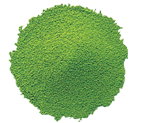
Matcha - Matcha is a fine powder made from milling Tencha and is dissolved in hot water rather than brewed like Sencha Teas. Matcha is recognized mostly for its use in the "Tea Ceremony". Dark Matcha (Koicha) is used in Japan's traditional tea ceremony. (Previously matcha was made from the leaves of very old tea bushes - over 100 years old). In recent times better cultivar varieties suited to Koicha have been selected to provide the best tea for Koicha.
Matcha is also used for making traditional Japanese confections and various savory dishes. Another unique feature of Matcha is that when one drinks Matcha, the leaf is fully consumed.
Read more about: Japanese Teas